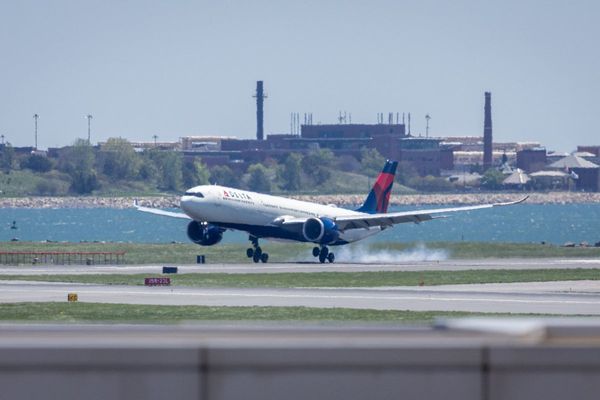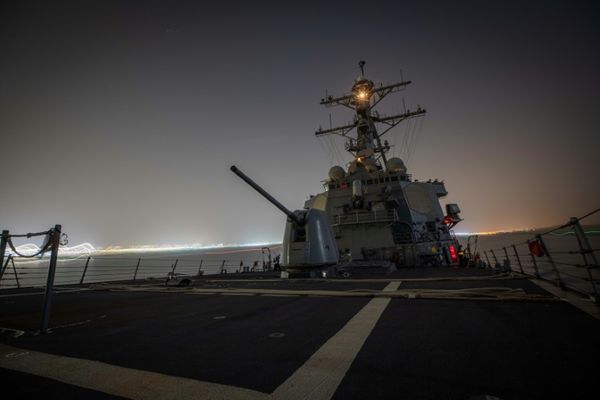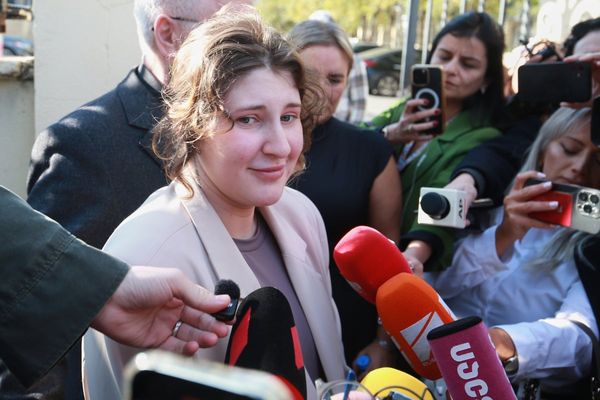WASHINGTON — President Joe Biden announced Thursday that U.S. forces killed the leader of Islamic State during an overnight raid in Syria that first responders reported left 13 civilians dead, calling the operation a success because it eliminated a “major terrorist threat to the world.”
“Thanks to the bravery of our troops, this horrible terrorist leader is no more,” Biden said during an address from the White House.
Senior administration officials said all troops returned safely from the mission and hailed the slaying of Abu Ibrahim al-Hashimi al-Qurayshi as a major counterterrorism success. Al-Qurayshi, who took over the reigns of Islamic State in 2019 following the slaying of its previous leader, had been coordinating “the group’s global terror operations to include directing operations that pose a direct threat to the American people and our partners around the world,” said a senior U.S. administration official, who spoke on condition of anonymity to discuss the matter.
The senior administration officials said measures were taken to reduce civilian casualties, but rescue workers with the Syrian Civil Defense, a group of first responders working in opposition-controlled areas known as the White Helmets, reported that at least 13 people were killed, including six children and four women. They also provided medical assistance to a young girl who lived in the house.
U.S. officials blamed their deaths on al-Qurayshi, who they said blew up himself and his family in his third floor apartment as the raid unfolded. An ISIS lieutenant was also slain during the raid, though U.S. officials did not specify how he died.
At least four children left the second floor safely, and a family on the first floor was removed safely, said the officials who acknowledged other women and children could have remained and died. They said they did not believe the reported totals of civilian casualties were accurate but did not provide their own accounting of how many bystanders were hurt or killed. Al-Qurayshi purposefully lived among civilians and used “these innocent people as a shield,” a senior administration official said.
U.S. officials had spent months planning the raid, Biden received an extensive briefing on the proposed operation in December, and gave the final go-ahead on Tuesday morning. Biden watched the raid, which officials called “incredibly complex” and “high risk,” in real time from the White House situation room, officials said.
The administration official said they long suspected al-Qurayshi would attempt to blow himself up during the operation, in hopes of destroying the building and injuring American troops and killing more civilians. In anticipation of such a suicide bombing, they conducted a remote engineering study to determine that the building would survive such an explosion and concluded that it would. The officials said the building largely survived the detonation.
“Unfortunately, ISIS once again revealed its barbarity and a final act of cowardice and disregard for human life has you’ve dealt with that made a blast, a significant blast, killing himself and several others, including his wife and children,” a senior administration official said.
Biden said that he chose to conduct a raid, rather than targeting al-Quryashi with an airstrike, because “this terrorist had chosen to surround himself with families, including children” and “we made this choice to minimize civilian casualties.”
Al-Qurashi is the second Islamic State leader to be killed in Idlib, a verdant province once famous for its olive groves that has since become the last bastion of those opposed to the government of Syrian President Bashar Assad. The province is controlled by Hayat Tahrir al-Sham, or HTS, a jihadist umbrella group that includes a former affiliate of al-Qaida in Syria. In 2019, U.S. special forces attacked a nondescript house on the periphery of Barisha, a small village near the Turkish border where then Islamic State’s so-called caliph Abu Bakr Baghdadi was hiding. He died after detonating an explosive vest.
A U.S. official said al-Qurashi was a “driving force” in the genocide of the Yazidi religious minority in Iraq and the enslavement of thousands of young Yazidi girls. When Islamic State scythed through Iraq in 2014, it took over the Yazidi homeland in the Singer region of northern Iraq. The group’s fighters launched a vicious genocide campaign, murdering 3,000 men and boys — shooting them execution-style in the back of the head and pushing them off cliffs — and enslaving thousands of women and girls. Years later, many are still missing; those who do return are often ostracized by their families.
Al-Qurashi’s death comes days after the terrorist group’s militants launched an audacious assault to release cadres imprisoned in the Syrian city of Hassakeh, a complex operation that observers believe could signal the group’s resurgence. Even so, al-Qurashi’s tenure marked a nadir for Islamic State, which in 2015 ruled a third of Iraq and of Syria, an area the size of Britain.
Islamic State lost the last of its self-styled caliphate in 2017 to a U.S.-led coalition working with Kurdish militiamen. Since then, Islamic State militants have hidden in the shadowlands between Iraq and Syria, taking advantage of the seams of control in the patchwork of authorities in the two countries.
The Syrian Observatory for Human Rights, a conflict monitor with a network of activists in Syria, reported that what began as a standoff soon turned into an all-out battle, with militants firing rocket propelled grenades and heavy anti-aircraft guns against U.S. forces.
Other reports said that one of the helicopters took damage and was forced to land before it was abandoned and destroyed. American officials said the helicopter had to be destroyed because of mechanical issues.
Residents near the raid described continuous gunfire and explosions that jolted the sleepy village of Atmeh in Idlib province, near the Turkish border, an area dotted with camps for internally displaced people from Syria’s decadelong civil war.
Activists near Deyr Ballout, a Syrian hamlet a few miles from the Syrian-Turkish border, reported on social media that they saw helicopters flying in the area sometime after midnight.
Several videos — which could not be independently verified — purport to show the attack. The sounds of heavy machine-gun fire can be heard in one; in another, a fire breaks out at the entrance of a two-story building, and a voice on a loudspeaker tells those inside that the area is surrounded and that children should come out.
Video taken by a reporter with Al-Akhbar Al-Aan, a UAE-based news channel, purported to show the building where the operation took place. The clip shows a scene of destruction, with cinderblocks spilling over the side of the building where ordnance had struck; rubble and detritus cover the floor along with a big smear of blood.
———
(Wilber reported from Washington and Bulos from Kyiv, Ukraine.)







